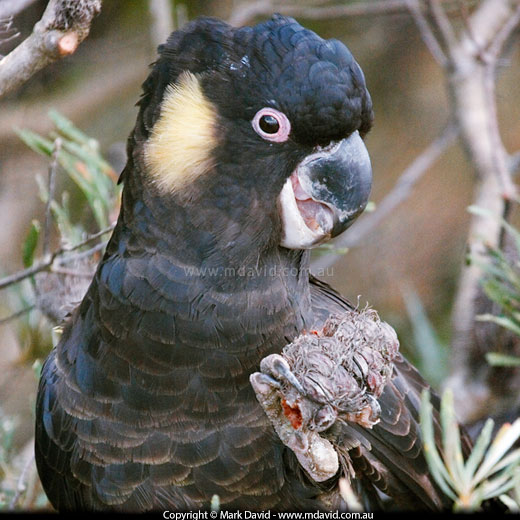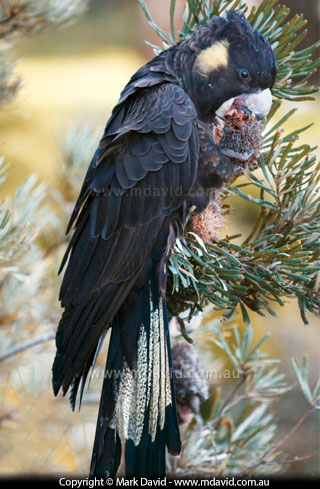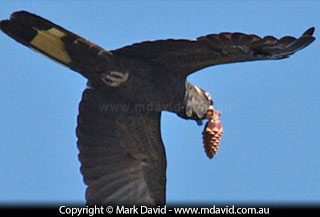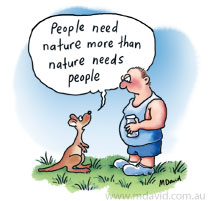
Now we’re talking about one of my favourite birds. So what is it about Yellow-tailed Black Cockatoos that makes them so special?

A Yellow-tailed Black Cockatoo demolishing a Banksia seed pod. We know this one’s a male because he has a dark beak and a pink ring of skin around the eye.
What they look like
The Yellow-tailed Black Cockatoo (Calyptorhynchus funereus) is an impressive big bird, between 600 and 900mm long, and with about half of that being tail. Their feathers are mostly brown-black with yellow patches on the cheeks and tail. Actually they look quite a lot like the White-tailed Black Cockatoo.

We know this one is a female because she has a pale beak and a grey patch of skin around the eye
The call
These birds have a distinctive haunting, mournful call that can be heard a long way away. I think their call is one of the best things about them. I keep thinking their call would be perfect to use as a sound effect for computer-generated Pterodactyls in a dinosaur movie. If you hear one of their calls and look around you will often see a pair, or perhaps a small group of the birds flying past in their graceful slow-flapping way. One of the exceptions to this ‘small group’ idea can be found in Sydney’s Centennial Park, where large groups of the birds are sometimes seen flying overhead.

Eat in or take away: A Yellow-tailed Black Cockatoo flies over a Sydney park carrying a pine cone in its beak. You can be thankful that it didn’t drop it, because it was a long way up






